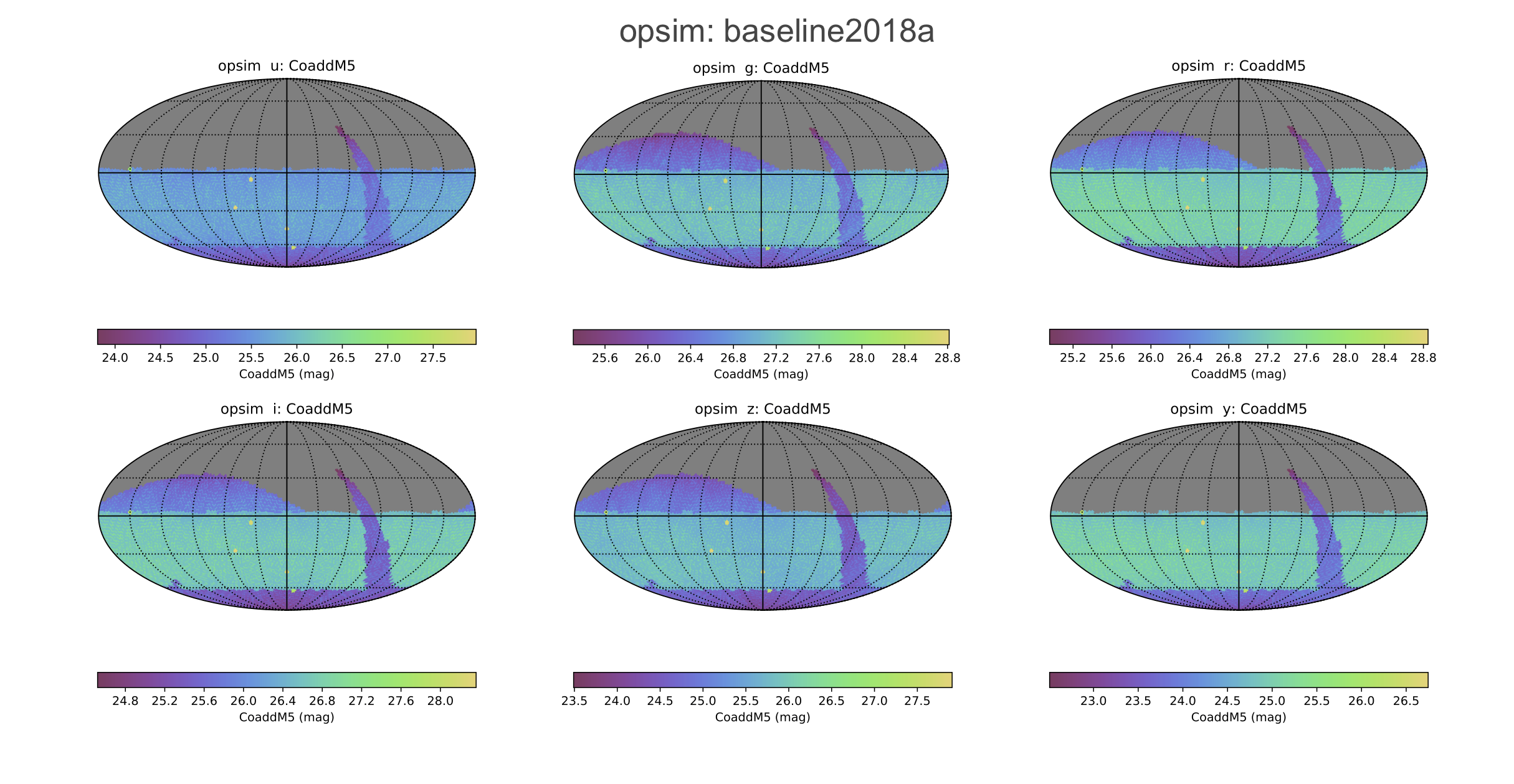


Questions? Everyone is welcome to ask about survey cadence in the "Science - Survey Strategy [2]" category of the Rubin Community Forum.
As of 2020, the Survey Cadence Optimization Committee (SCOC) [3] was charged to make specific recommendations for the cadence choices for the full 10-year Legacy Survey of Space and Time (LSST), based on input from the science community. Read more about the SCOC, the 2020 Cadence Notes, and the timeline for decisions about LSST survey strategy here [3]. Learn more about how to participate in the analysis of Operations Simulations (OpSim) with the Metric Analysis Framework in the Survey Strategy category of the Rubin Community Forum [2].
Read the 2017 community white paper, Science Driven Optimization of the LSST Observing Strategy [4], or view the document's GitHub repository [5].
Synthesizing the requirements to accomplish the four primary science objectives of Rubin Observatory,
results in the following constraints for the LSST Survey Strategy:
The "Baseline Survey Strategy" refers to a fiducial survey strategy which will meet the constraints imposed by the four primary science objectives. This strategy takes into account the fact that making uniform progress in time toward each of the scientific goals facilitates analyses made while the survey is still in progress.
Using the current baseline cadence, LSST ten-year survey will take more than five million exposures, collecting over 50 petabytes of raw image data to produce a deep, time-dependent, movie of about 20,000 square degrees of sky. The sequence, or "cadence" with which these exposures are made is essential to achieving multiple scientific goals from a single survey, an important feature of the Rubin Observatory LSST concept. The current default plan implemented in the baseline survey assumes that LSST will acquire images as pairs of back-to-back, 15-second exposures to aid in cosmic-ray rejection. This pair is called a visit - a single observation of ~ten-square-degrees of sky through a given filter. Designing the LSST survey requires ordering these visits in time and allocating them among its six filters [6] so as to maximize the return on scientific goals in the decade-long survey.
In addition to Rubin Observatory's 18,000 deg2 main survey via its “universal cadence”, up to approximately 10% of Rubin observing time will be dedicated to other programs, including intensive observation of a set of Deep Drilling Fields. Deeper coverage and more frequent temporal sampling (in at least some of the LSST Camera's ugrizy filters) will be obtained for the Deep Drilling Fields than for typical points on the sky. The full Deep Drilling Field (DDF) program [7] will address a broad range of science topics, including Solar System, Galactic, and extragalactic studies.
Science Book - Chapter 1: Introduction [8]- An overview of the Rubin Observatory Project including its history, science goals, and system design.
Science Book - Chapter 2: LSST System Design [9] - A description of the basic elements of the Rubin Observatory system design, with particular emphasis on elements impacting the science objectives.
Science Book - Chapter 3: LSST System Performance [10] - A description of the essential characteristics of Rubin Observatory system performance.
Links
[1] https://survey-strategy.lsst.io/
[2] https://community.lsst.org/c/sci/survey-strategy/37
[3] https://www.lsst.org/content/charge-survey-cadence-optimization-committee-scoc
[4] https://ui.adsabs.harvard.edu/abs/2017arXiv170804058L/abstract
[5] https://github.com/LSSTScienceCollaborations/ObservingStrategy
[6] https://github.com/lsst/throughputs/tree/master/baseline
[7] https://www.lsst.org/scientists/survey-design/ddf
[8] https://www.lsst.org/sites/default/files/docs/sciencebook/SB_1.pdf
[9] https://www.lsst.org/sites/default/files/docs/sciencebook/SB_2.pdf
[10] https://www.lsst.org/sites/default/files/docs/sciencebook/SB_3.pdf